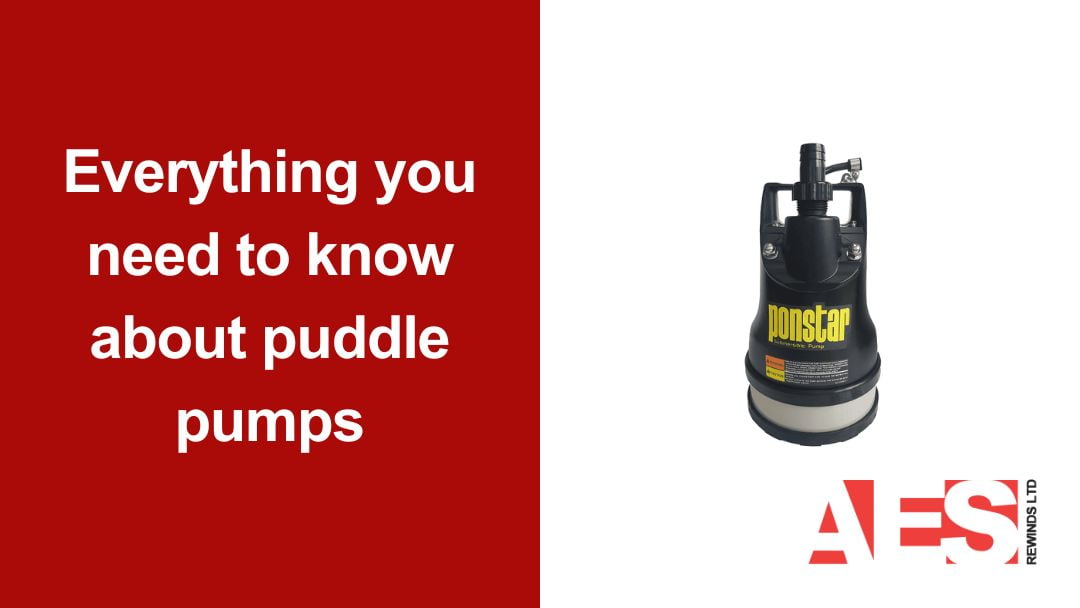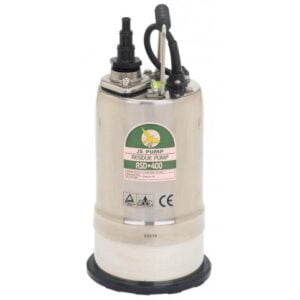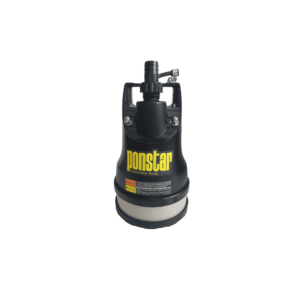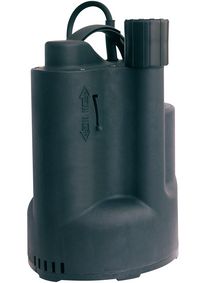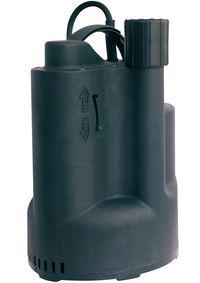Puddle pumps are a vital tool for tackling low-level water removal in both commercial and domestic environments. From flooded basements and cellars to construction sites and emergency response, these compact submersible pumps are known for their efficiency, reliability, and ability to operate in shallow water.
But what exactly is a puddle pump, how does it work, and when should you use one? In this guide, we’ll cover everything you need to know to choose and operate the right puddle pump for your needs.
What is a puddle pump?
A puddle pump is a type of submersible pump designed to remove water from flat surfaces with very shallow puddles — as little as 1mm deep in many cases. Unlike standard submersible pumps, puddle pumps can operate in extremely low water levels, making them ideal for areas where complete drainage is required.
These pumps are hermetically sealed and often filled with oil to protect internal components. They are cooled by the water around them and must remain at least partially submerged during operation to avoid overheating.
Common uses include:
- Emergency response situations
- Flooded basements or cellars
- Construction site dewatering
- Surface water removal in car parks or plant rooms
How do puddle pumps work?
Puddle pumps use centrifugal force to move water. Inside the pump, an impeller spins at high speed, drawing water in and forcing it out through a discharge outlet.
Key features that set puddle pumps apart include:
- A sealed volute and impeller design that allows them to pump down to 1mm
- A non-return valve to stop water flowing back into the area
- Thermal overload protection on some models to prevent damage during dry running
Also known as puddle suckers, these pumps can be operated manually or set up for automatic use via float switches and control panels.
How to choose a puddle pump
Choosing the right puddle pump depends on several factors:
- Type of liquid: Consider whether the fluid contains debris, and check for corrosive properties or high temperatures.
- Flow rate: Measured in litres per minute (LPM) or per hour (LPH), this indicates how quickly the pump can remove water.
- Power supply: Ensure your site or home has the correct voltage (110V for site use, 230V for domestic use).
- Physical space: For tight spaces or narrow sumps, choose a compact model with a low-profile base.
For situations such as cellar flooding, a low-level puddle pump may be ideal, especially when fitted with an automatic float switch for unattended operation. Manual control may be preferred for precise pumping in more sensitive environments.
-
%22%20transform%3D%22translate(.6%20.6)%20scale(1.17188)%22%20fill-opacity%3D%22.5%22%3E%3Cellipse%20fill%3D%22%23949494%22%20rx%3D%221%22%20ry%3D%221%22%20transform%3D%22matrix(35.87423%20-.32892%202.33539%20254.7143%20123.6%20176.1)%22%2F%3E%3Cellipse%20fill%3D%22%23fff%22%20cx%3D%22225%22%20cy%3D%2285%22%20rx%3D%2244%22%20ry%3D%22233%22%2F%3E%3Cpath%20fill%3D%22%23fff%22%20d%3D%22M-26.3%20250.4L-8.5-4l80.8%205.6L54.5%20256z%22%2F%3E%3Cellipse%20fill%3D%22%239f9f9f%22%20rx%3D%221%22%20ry%3D%221%22%20transform%3D%22matrix(-43.15312%20-2.85404%202.32576%20-35.16558%20124.3%2068.7)%22%2F%3E%3C%2Fg%3E%3C%2Fsvg%3E) JS RSD-400 110v Residue Puddle Pump£233.23 +VAT
JS RSD-400 110v Residue Puddle Pump£233.23 +VAT -
%22%20transform%3D%22translate(.6%20.6)%20scale(1.17188)%22%20fill-opacity%3D%22.5%22%3E%3Cellipse%20fill%3D%22%23949494%22%20rx%3D%221%22%20ry%3D%221%22%20transform%3D%22matrix(35.87423%20-.32892%202.33539%20254.7143%20123.6%20176.1)%22%2F%3E%3Cellipse%20fill%3D%22%23fff%22%20cx%3D%22225%22%20cy%3D%2285%22%20rx%3D%2244%22%20ry%3D%22233%22%2F%3E%3Cpath%20fill%3D%22%23fff%22%20d%3D%22M-26.3%20250.4L-8.5-4l80.8%205.6L54.5%20256z%22%2F%3E%3Cellipse%20fill%3D%22%239f9f9f%22%20rx%3D%221%22%20ry%3D%221%22%20transform%3D%22matrix(-43.15312%20-2.85404%202.32576%20-35.16558%20124.3%2068.7)%22%2F%3E%3C%2Fg%3E%3C%2Fsvg%3E) JS RSD-400 230v Residue Puddle Pump£231.85 +VAT
JS RSD-400 230v Residue Puddle Pump£231.85 +VAT -
%22%20transform%3D%22translate(.6%20.6)%20scale(1.17188)%22%20fill-opacity%3D%22.5%22%3E%3Cellipse%20fill%3D%22%23949494%22%20rx%3D%221%22%20ry%3D%221%22%20transform%3D%22matrix(35.87423%20-.32892%202.33539%20254.7143%20123.6%20176.1)%22%2F%3E%3Cellipse%20fill%3D%22%23fff%22%20cx%3D%22225%22%20cy%3D%2285%22%20rx%3D%2244%22%20ry%3D%22233%22%2F%3E%3Cpath%20fill%3D%22%23fff%22%20d%3D%22M-26.3%20250.4L-8.5-4l80.8%205.6L54.5%20256z%22%2F%3E%3Cellipse%20fill%3D%22%239f9f9f%22%20rx%3D%221%22%20ry%3D%221%22%20transform%3D%22matrix(-43.15312%20-2.85404%202.32576%20-35.16558%20124.3%2068.7)%22%2F%3E%3C%2Fg%3E%3C%2Fsvg%3E) JS RSD-400 Residue Puddle PumpsFrom £231.85
JS RSD-400 Residue Puddle PumpsFrom £231.85 -
%22%20transform%3D%22translate(.6%20.6)%20scale(1.17188)%22%20fill-opacity%3D%22.5%22%3E%3Cellipse%20fill%3D%22%235a5a5a%22%20rx%3D%221%22%20ry%3D%221%22%20transform%3D%22matrix(-39.2526%20-.89077%201.65468%20-72.91525%20123.6%20126.4)%22%2F%3E%3Cellipse%20fill%3D%22%23636363%22%20rx%3D%221%22%20ry%3D%221%22%20transform%3D%22matrix(1.20246%20-41.82225%2020.75392%20.59671%20125.2%20122)%22%2F%3E%3Cellipse%20fill%3D%22%23fff%22%20cx%3D%22221%22%20cy%3D%22133%22%20rx%3D%2245%22%20ry%3D%22255%22%2F%3E%3Cellipse%20fill%3D%22%23fff%22%20rx%3D%221%22%20ry%3D%221%22%20transform%3D%22matrix(52.63434%20-1.76515%206.53595%20194.89277%2042.7%20144.6)%22%2F%3E%3C%2Fg%3E%3C%2Fsvg%3E) Koshin Ponstar Ponstar PXL-52511 110v Residue Pump£329.14 +VAT
Koshin Ponstar Ponstar PXL-52511 110v Residue Pump£329.14 +VAT -
%22%20transform%3D%22translate(.6%20.6)%20scale(1.17188)%22%20fill-opacity%3D%22.5%22%3E%3Cellipse%20fill%3D%22%235a5a5a%22%20rx%3D%221%22%20ry%3D%221%22%20transform%3D%22matrix(-39.2526%20-.89077%201.65468%20-72.91525%20123.6%20126.4)%22%2F%3E%3Cellipse%20fill%3D%22%23636363%22%20rx%3D%221%22%20ry%3D%221%22%20transform%3D%22matrix(1.20246%20-41.82225%2020.75392%20.59671%20125.2%20122)%22%2F%3E%3Cellipse%20fill%3D%22%23fff%22%20cx%3D%22221%22%20cy%3D%22133%22%20rx%3D%2245%22%20ry%3D%22255%22%2F%3E%3Cellipse%20fill%3D%22%23fff%22%20rx%3D%221%22%20ry%3D%221%22%20transform%3D%22matrix(52.63434%20-1.76515%206.53595%20194.89277%2042.7%20144.6)%22%2F%3E%3C%2Fg%3E%3C%2Fsvg%3E) Koshin Ponstar Ponstar PXL-52522 230v Residue Pump£329.14 +VAT
Koshin Ponstar Ponstar PXL-52522 230v Residue Pump£329.14 +VAT -
%22%20transform%3D%22translate(.6%20.6)%20scale(1.17188)%22%20fill-opacity%3D%22.5%22%3E%3Cellipse%20fill%3D%22%235a5a5a%22%20rx%3D%221%22%20ry%3D%221%22%20transform%3D%22matrix(-39.2526%20-.89077%201.65468%20-72.91525%20123.6%20126.4)%22%2F%3E%3Cellipse%20fill%3D%22%23636363%22%20rx%3D%221%22%20ry%3D%221%22%20transform%3D%22matrix(1.20246%20-41.82225%2020.75392%20.59671%20125.2%20122)%22%2F%3E%3Cellipse%20fill%3D%22%23fff%22%20cx%3D%22221%22%20cy%3D%22133%22%20rx%3D%2245%22%20ry%3D%22255%22%2F%3E%3Cellipse%20fill%3D%22%23fff%22%20rx%3D%221%22%20ry%3D%221%22%20transform%3D%22matrix(52.63434%20-1.76515%206.53595%20194.89277%2042.7%20144.6)%22%2F%3E%3C%2Fg%3E%3C%2Fsvg%3E) Koshin Ponstar PXL Professional Residue Pumps 110v/230vFrom £329.14
Koshin Ponstar PXL Professional Residue Pumps 110v/230vFrom £329.14 -
 Pentair Flotec Compac 200 (DPC) 230v Submersible Pump£243.58 +VAT
Pentair Flotec Compac 200 (DPC) 230v Submersible Pump£243.58 +VAT -
 Pentair Flotec Compac 150 110v Submersible Pump£214.60 +VAT
Pentair Flotec Compac 150 110v Submersible Pump£214.60 +VAT -
 Pentair Flotec Compac 150 230v Submersible Pump£214.60 +VAT
Pentair Flotec Compac 150 230v Submersible Pump£214.60 +VAT
How to use a puddle pump
How to use a puddle pump
To safely and efficiently use a puddle pump, follow these steps:
- Place the pump on a flat, stable surface in the area to be drained
- Ensure it is submerged in the liquid to protect the motor from overheating
- Connect a suitable discharge hose, checking that it’s securely fitted
- Monitor water levels, especially in manual mode, to prevent dry running
- Inspect regularly for wear, blockages, or debris build-up
Always follow the manufacturer’s operating instructions, especially regarding maintenance and cleaning, to keep your pump in good working condition.
Frequently Asked Questions
How Do You Pump Water Out of a Puddle?
Use a puddle pump rated for shallow water removal. Place the pump in the puddle, connect the discharge hose, and start pumping. Ensure it’s suitable for the water depth and volume.
Can Puddle Pumps Run Dry?
Most puddle pumps are not designed to run dry for long periods. While some include thermal protection, repeated dry running can damage the motor. Always ensure water is present when in operation.
Conclusion
Puddle pumps are a practical and highly effective solution for shallow water removal. Whether you’re tackling a flooded basement, managing site drainage, or preparing for emergencies, the right puddle pump can make all the difference.
If you’re unsure which model is best for your needs, our team is here to help.
Get in touch today for expert advice and product recommendations — we’ll help you find the perfect pump for your application.

